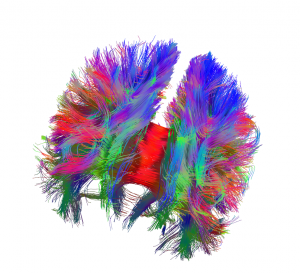Individual Differences in Navigational Ability
Why are some people good at navigating while others struggle? Navigation is a complex process involving many cognitive and neural systems. We study how these systems interact to produce individual abilities, using virtual reality, dynamic connectivity fMRI, resting state fMRI, diffusion weighted imaging, and gray matter volume. We are connecting this work to robotics to produce better autonomous systems.
Behavioral and Neural Correlates of Human Path Integration
Path integration is a process through which humans both acquire spatial knowledge about the environment and track position during movement. It is theorized to form the basis of our episodic memory systems, with a large animal literature on grid, place, and head direction cells to support this idea. We are studying the neural coding of these building blocks of navigation and memory in humans, as well as the behavioral fundamentals of path integration.
Spatial Navigation, Sex Hormones, and the Aging Brain
Large sex differences have often been observed in navigation ability, but the reasons for this are unclear. Women have twice the rate of dementia than men, and navigation has recently been discovered as an early behavioral and neural marker for dementia. Bringing together an interdisciplinary team, we are examining a crucial window of reproductive aging: the menopausal transition.
Space and Time in the Hippocampus
Research in my lab has observed that the hippocampus flexibly tracks many forms of distance, including distance from a home location, distance in straight line, and rotation in place. Does the hippocampus process other types of distance and relational information in a domain-general manner? My lab is currently testing this question, examining relational processing across spatial, temporal, and social distance.
Structure of Spatial Knowledge
It is commonly assumed that the structure of spatial knowledge is a metric map. In contrast, we propose that spatial knowledge is something coarser and more fluid. We are testing the theory that the underlying structure of spatial knowledge is a labeled graph—the path connections between locations in the environment. This graph includes coarse local metric information without relying on a globally-consistent map-like structure.
Active navigation seems like a good way to learn, but what exactly does “active” mean? We have tested several factors that could support active navigation, including body-based information, attention, and active decision making, fining that it depends on the type of spatial knowledge to be acquired. We are testing the contribution of these factors by using virtual reality, dynamic changes in the brain’s network connectivity during learning, EEG studies of theta oscillations, and eye tracking.
